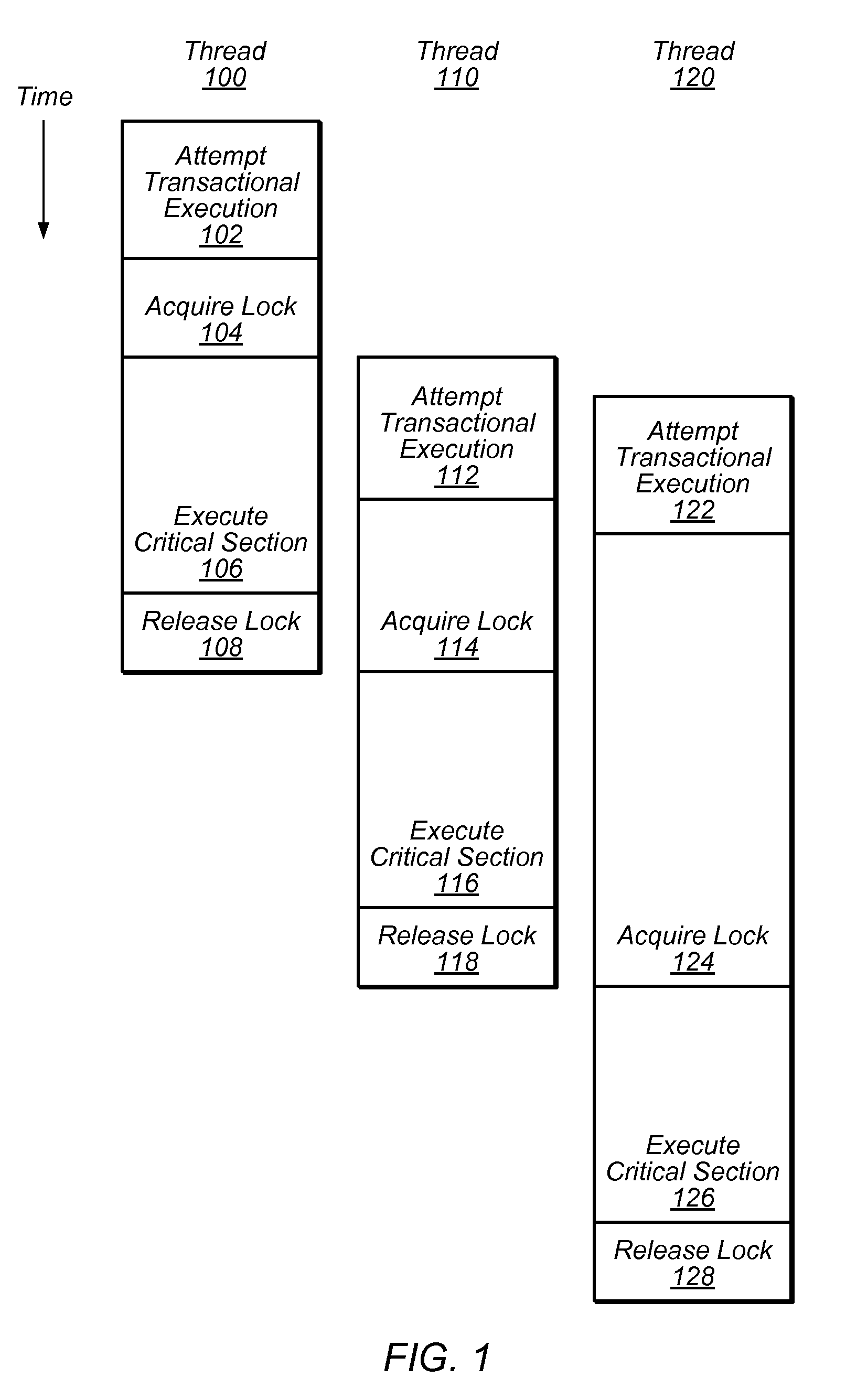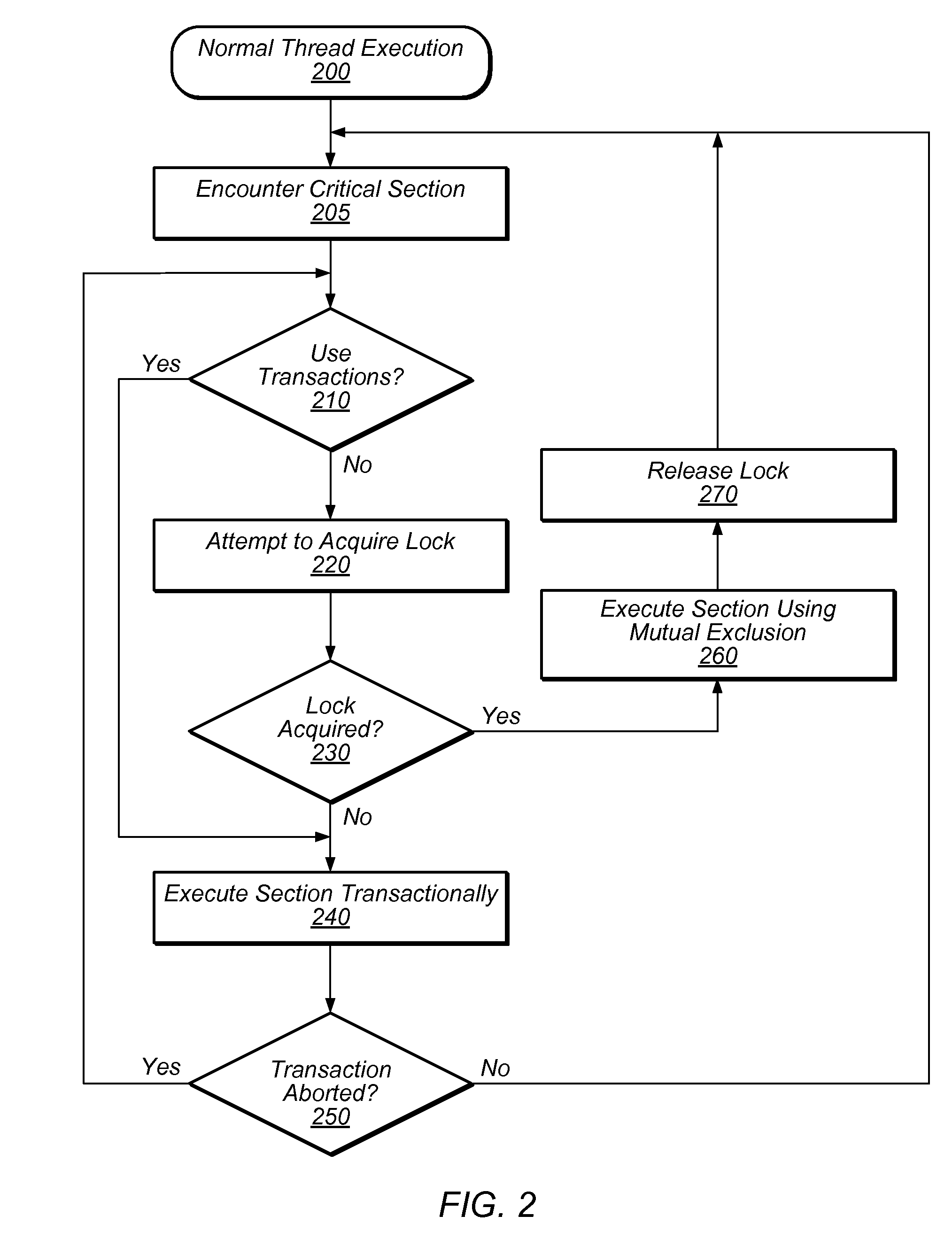System and Method for Reducing Serialization in Transactional Memory Using Gang Release of Blocked Threads
a transactional memory and serialization technology, applied in the field of multi-threaded computer systems, can solve the problems of race conditions, performance limitations, and ineffective traditional approaches to boosting cpu performance, and achieve the effects of reducing the number of transactions
- Summary
- Abstract
- Description
- Claims
- Application Information
AI Technical Summary
Benefits of technology
Problems solved by technology
Method used
Image
Examples
Embodiment Construction
[0018]In some embodiments of a system implementing TLE, a thread may execute a critical section using mutual exclusion or in transactional mode. There may be various reasons why a thread in a transactional memory system may attempt to execute a critical section using mutual exclusion (i.e. revert to mutual exclusion) rather than attempting to execute it transactionally. In some cases, it may be infeasible to execute a given critical section transactionally. For example, a critical section may be too long to execute transactionally because it may require more transactional resources than are available on the hardware. In another example, it may be infeasible to execute a critical section transactionally because it contains one or more instructions that cannot be executed transactionally. If the effects of such an instruction may be observed by entities other than the executing thread before the transaction is committed, then the critical section cannot be executed transactionally. Fo...
PUM
 Login to View More
Login to View More Abstract
Description
Claims
Application Information
 Login to View More
Login to View More - R&D
- Intellectual Property
- Life Sciences
- Materials
- Tech Scout
- Unparalleled Data Quality
- Higher Quality Content
- 60% Fewer Hallucinations
Browse by: Latest US Patents, China's latest patents, Technical Efficacy Thesaurus, Application Domain, Technology Topic, Popular Technical Reports.
© 2025 PatSnap. All rights reserved.Legal|Privacy policy|Modern Slavery Act Transparency Statement|Sitemap|About US| Contact US: help@patsnap.com



